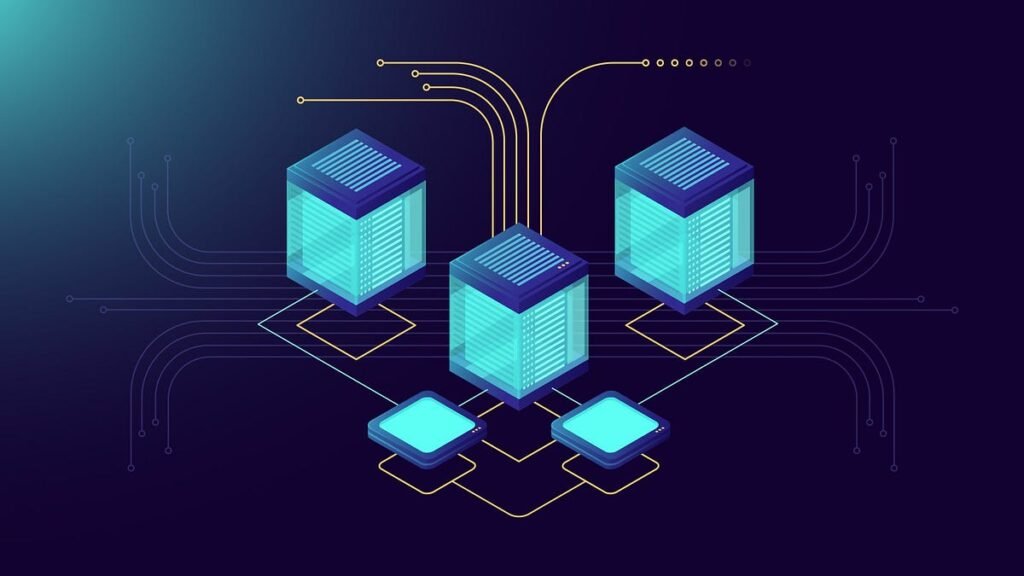Flow Blockchain scalability: In the Layer-1 area, Flow Blockchain has taken a big step, exposing a road plan to enable one million transactions per second (TPS)—without turning to sharding or Layer-2 solutions. This distinguishes it from other blockchain systems, which depend primarily on off-chain scalability techniques or fragmenting state.
Flow follows a different path. Most scalable blockchains divide data onto individual shards or push calculations to Layer-2 rollups. Flow seeks to preserve app composability while processing large transaction volumes by concentrating on vertical scalability and maintaining a unified global state.
This design choice changes everything. Developers can create easily interacting apps without sharding, removing the intricate cross-shard communication requirement. Blockchain games, digital goods, and consumer-facing Web3 apps where flawless performance is non-negotiable depend mainly on this.
Flow’s Scalable Architecture
Simultaneous improvements to transaction and state processing define Flow’s method of scalability. Its architecture removes data fragmentation encountered in modular chains by handling petabytes of data inside a single worldwide state.
Flow has a multi-node design that separates the network into discrete roles—collecting, consensus, execution, and verification—rather than outsourcing performance to rollups or outside solutions. This arrangement improves performance without sacrificing decentralization, an uncommon accomplishment with Layer-1 systems.
By contrast, Ethereum and related chains sometimes depend on off-chain rollups, which can boost throughput and cause app-layer fragmentation and interoperability problems. Flow eliminates those risks by selecting and guaranteeing vertical scalability. It also has a more straightforward development process and a better user experience.
Flow Boosts Developer Access
Flow has implemented Ethereum Virtual Machine (EVM) support to attract more developers and grow its ecosystem. This action enables Solidity developers to bring their contracts to Flow without rewriting them in Cadence, Flow’s smart contract language.
Cadence still is rather important, though Flow’s creative features—gasless transactions, resource-oriented programming, and built-in account abstraction—are powered by it. These special features give developers sophisticated tools and help to simplify user onboarding.
Flow supports strong incentives to back its vision for developers first. Testnet prizes, thorough documentation, and hefty funding meant to hasten product development and ecosystem expansion abound on the platform. For artists in gaming, collectibles, and digital marketing, these tools make FlowFlowticularly appealing.
Flow Blockchain’s Real-World Power
Flow Blockchain scalability and sustainability are not oppositional. With roughly 0.8 seconds to settle transactions, the blockchain keeps an average charge of just $0.000179 per transaction. These benchmarks create one of the most reasonably priced and fastest blockchains now in production.
Even more remarkable, Flow achieves this performance using just 0.18 GWh yearly—less energy than many business server configurations demand. Flow’s carbon-neutral footprint helps place it as an industry leader in energy-efficient blockchain solutions, as climate-conscious innovation becomes a key difference in Web3.
AlreadyFlow’s mainstream initiatives include Mattel’s digital collectibles marketplace, UFC Strike, and NBA Top Shot. These alliances show that Flown enables high-volume, consumer-ready applications in the real world, and not only creates theoretical infrastructure.
Flow’s On-Chain Vision
The roadmap of FlowFloweisit quite evident: the network will not pursue off-chain rollups or sharding. Instead, it emphasizes keeping security and composability while scaling straight on-chain. This vision supports the idea that minimal latency, consistent app integration, and unified architecture define consumer-grade Web3. Many blockchains sacrifice usability or composability for throughput, whereas Flow offers all three.
Flow is Ready for Builders
Flow provides the speed, tools, and user experience you need to succeed, whether your role is developer, creative, or founder, building the next great Web3 app. There is never a better moment to become part of the Flow ecosystem as EVM compatibility is live and developer support initiatives run full tilt.
